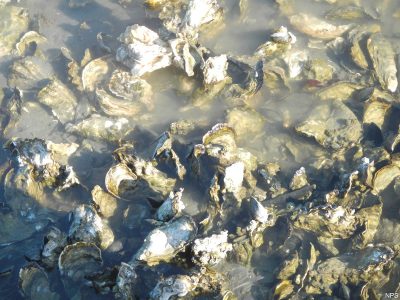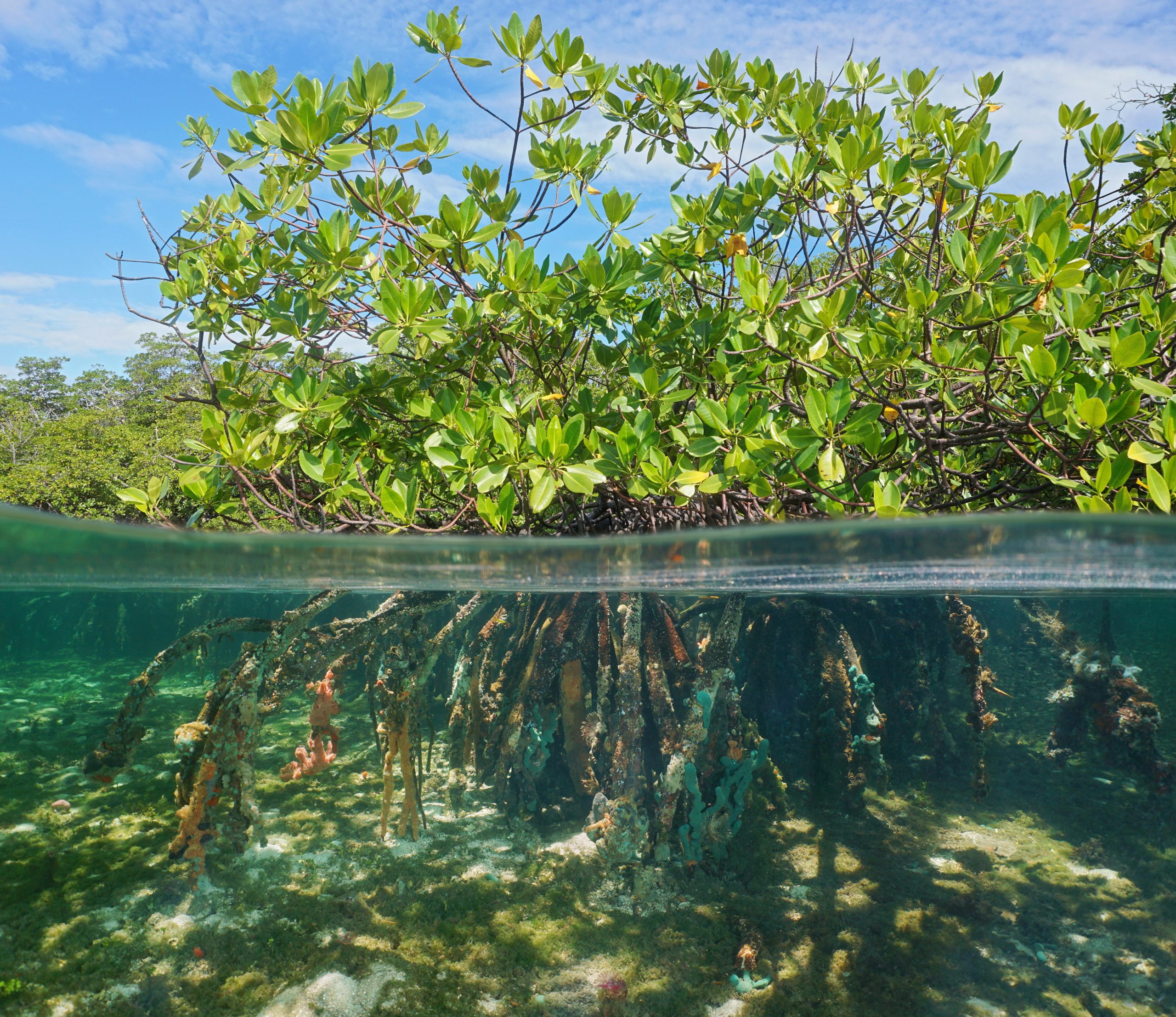
Photo courtesy National Park Service
The Tampa Bay Estuary Program’s 1996 goal of restoring 38,000 acres of seagrasses — equal to 95% of what was growing in the 1950s — may still be the most ambitious ever set, but the goals outlined in the 2020 Habitat Master Plan come close.
And while the seagrass goal was originally developed based on 1950s acreage (minus areas that had been filled), the goals in the newest habitat plan are both very specific in terms of where they can be achieved and very clear on a timeframe to accomplish them.
In total, the new plan calls for the creation or restoration of more than 10,000 acres of habitat along with 45 miles of living shoreline by 2050. Intermediate targets for each of the 13 habitat types are set for 2030, targeting the total acreage of preserved and restored habitat to more than 450,000 acres.
The 2020 master plan takes a different tack than previous habitat plans which focused on “restoring the balance” of habitats to match those found in the 1950s. Instead, this plan looks at “opportunity” lands that could still potentially be restored – including lands that are currently coastal uplands but could become intertidal as sea level rises.

Photo by Damsea
“This plan is primarily focused on what is possible today rather than replicating past ecological conditions, and considers the future impacts of climate change,” said Gary Raulerson, the TBEP ecologist directing the update.
Map “layers” — or data associated with specific locations — and other information was used to identify restoration opportunities. One step in developing the plan was determining the current extent of habitats within the watershed, and seeing how they had changed since 1990. Other data provided information on restoration rates over the past several decades, showing that the community’s efforts to restore habitats has consistently increased since the 1970s.
Additional layers helped identify the locations, types, and extent of habitat restoration that could be possible in the next few decades. Restorable areas were described as lands that were generally not intensively developed, including fallow agricultural fields, golf courses, and unreclaimed mining sites because they are generally considered easier to restore than hardened and more intensely developed areas.
The watershed was also divided into areas currently in public ownership, which is considered most protected, areas that are on a public acquisition list, and lands in neither of those categories. Other layers that helped determine restorable lands included soil information, elevation data, and salinity conditions in the rivers and streams around Tampa Bay.
The master plan update pulled all of those databases together to help establish 2030 targets and 2050 goals for the different habitats. “We’re using past performance as a guideline to what we can do in the future, but we’re also setting aspirational goals and raising the bar higher than we have in the past,” Raulerson said.
Underwater Habitats

Photo courtesy Environmental Protection Commission of Hillsborough County.
Except for oyster beds, the habitat plan calls for protecting current resources, including seagrasses, artificial reefs, natural hard bottom, and tidal flats. Seagrass acreage — currently more than 2,000 acres above the original 38,000-acre goal — is likely to vary somewhat year-over-year depending upon rainfall.
Oyster beds provide food and shelter for small fish and crustaceans, and a single adult oyster can filter up to 520 gallons of water every day, potentially “bioremediating” annual toxic algal blooms in Old Tampa Bay. The 466-acre goal for oysters nearly triples the current acreage of 166 acres by 2050, although there are likely more oyster beds in the bay than have been mapped, Raulerson said.
Oyster reefs are counted as part of the Southwest Florida Water Management District’s biennial seagrass monitoring report, but they’re a recent addition and don’t include oysters living under mangroves, along seawalls and other locations. TBEP is finalizing an oyster habitat suitability index that would identify restoration sites where salinity, sediment, and depth would support the growth of reefs.
“It’s an aggressive goal, but given the importance of oysters and recent oyster restoration work in Tampa Bay, we think it’s justified,” Raulerson said.
Intertidal Habitats
Intertidal habitats, including the mangrove forests that line much of Tampa Bay and the rarer salt barrens and salt marshes, are underwater at high tide and above it when the tide is low. The new habitat plan calls for expanding these habitat mosaics, which occur primarily below the five-foot topographic contour surrounding the bay, by nearly 3,500 acres. This five-foot contour of “opportunity” areas for intertidal habitat restoration is the expected extent of future sea-level rise through 2060.
Mangroves, which thrive in more tropical climates, are an early indicator of climate change, and already have replaced vast swaths of Tampa Bay’s original salt marshes. The habitat plan calls for protecting the bay’s current 15,000 acres, acknowledging they’re likely to expand in the future as a result of a warming climate.
Salt barrens, which can appear to be desolate, are actually thriving habitats for small crustaceans like fiddler crabs that are a favorite of many bird species. Salt barrens have been disproportionately lost over the past decades and have a special focus for the 2020 update with a goal of restoring 50, 100 and 150 acres over the next three successive decades.
Low-salinity salt marshes also have been disproportionately lost over the past decades as mangroves encroach upon the sites that meet their very specific requirements. Maps defining areas that could support low-salinity marsh grasses now, and in the future as sea level rises, indicate more than 1,450 acres could be restored.

Photo by Tom Ries
While most shorelines in Tampa Bay have been hardened with seawalls, the plan also includes a strong emphasis on living shorelines with the goal of adding 45 miles by 2050. Much of the estimated cost (approximately $1.5 million per mile) will be shouldered by private landowners who may consider replacing aging seawalls with the more cost-effective option of a living shoreline, Raulerson said.
Supratidal habitats
Vast expanses of habitats that are critical to fish and wildlife in Tampa Bay are above the high-tide mark, and are designated as “supratidal.” As part of the watershed, these areas are both critically important for the fish and wildlife who depend upon them for foraging and reproduction, while also filtering and cleaning waters that make it downstream to the estuary. For the first time, the 2020 Habitat Master Plan Update defines restoration targets and goals for some of these important watershed habitats.

Photo courtesy National Park Service
Wading birds, such as heron, ibis, egrets and wood storks, typically nest on mangrove islands or forests bordering the bay but must have freshwater marshes within nine miles of their nests because their young cannot tolerate saltwater prey. Other birds, including the iconic roseate spoonbill, American oystercatcher, and many terns, also forage primarily in freshwater wetlands.
An estimated 100,000 acres of freshwater wetlands were developed between the 1950s and 2007, compared to about 3,000 acres of intertidal habitat. Recognizing that loss, freshwater wetlands are targeted for the largest gain in the new habitat plan — 4,200 acres of non-forested wetlands and an additional 600 acres of forested wetlands.
Uplands also are a priority in this habitat plan with a goal to restore 2,100 acres by 2050. Coastal uplands, defined as those higher elevation areas within the five-foot contour surrounding the bay, will be necessary “migration” space in the coming decades as sea-level rise pushes inland, allowing tidal wetlands habitats to persist into the future. Like freshwater wetlands, coastal and native uplands have been significantly lost to development over the last 70 years.
“It is the TBEPs hope that through implementation of this plan through 2050, the bay will continue on its positive trajectory for recovery,” Raulerson said. “Focusing on restoring the full suite of critical coastal habitats represented underwater in the bay to the distant headwater forests in the watershed will ensure that the recovery will benefit all the fish and wildlife that depend upon a healthy Tampa Bay.”
